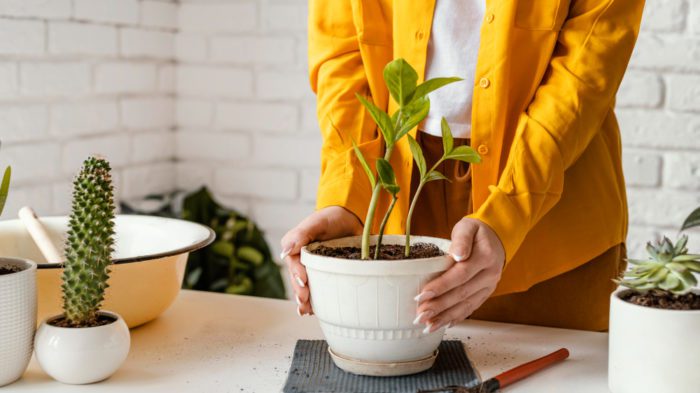There are many pesticides to get rid of gnats. But as we know, gnats are primarily present in the yards due to moisture and vegetation.
Don’t you think using chemicals will affect the health of your vegetation? But at the same time, we cannot let gnats live.
Something needs to be done!
In this article, we will discuss the plants that are natural gnat repellents and, thus, help you keep gnats out of your yard without compromising the health of your vegetation.
Why is it Necessary to Eliminate Gnats?

There are various r, reasons to eliminate gnats, such as the damage they cause to the plants, carrying diseases, etc.
All these things will be discussed in this section, but the first and most important thing is that they can multiply themselves in just a few days.
Gnats breed well in decomposed humid matter. Their larva feeds on the fungi, which grow in soil.
As long as the humidity is available, gnats will continue to live and breed in your yard.
Female gnats lay up to 300 eggs; these eggs hatch in 6 days, then come to the larva, which takes around 12 days to convert into a pupa.
And finally, the pupal stage lasts for about a week before becoming an adult. In short, your yard will have hundreds of gnats in just a few days.
The presence of gnats is a threat to homeowners also. They can transport bacteria and viruses from dirty areas to your home and can contaminate your edibles.
They damage the plants by feeding on them. A large infestation can even kill a plant. The typical sign of identifying a gnat infestation is to look for green leaves getting wilted.
Plants That Repels Gnats

Planting gnat repellents is one of the most effective ways to prevent the establishment of gnats in your yard or house.
Below is the list of plants that gnats hate and are capable of repelling gnats. Thus, growing these plants can help you protect your yard and house from the attacks of gnats.
Citronella
You may have heard that citronella is effective for mosquitoes, but that doesn’t mean you cannot use it for gnats. Its naturally strong smell is strong enough to repel gnats.
The only drawback of this plant is that it cannot survive winter. Citronella loves a warm climate, so plant it so it can be quickly taken inside when the winter arrives. You may use a big pot or planter.
Horsemint
Horsemint is very similar to citronella. Just like citronella, it cannot survive the winter season. It would help if you planted it in a crater to take it in when the freezing weather arrives.
It uses its strong scent to repel gnats and other pests. Horsemint can survive harsh weather conditions as effective against gnats most of the time.
Marigold
Marigold contains a compound named pyrethrum that is used for making a lot of chemical pesticides. This will not only repel gnats but is also effective against other bugs, such as mosquitoes.
You can either plant it as an ornamental plant or can create a border to prevent gnats from entering your yard. This plant can also survive harsh weather conditions.
The drawback of this plant is that it is not perennial; you must plant it yearly. Also, it does well only in fertile soil.
Ageratum
Its strong scent not only repels gnats but also exterminates them. It comprises coumadin, a compound used for making various chemical pesticides.
It does not require total exposure to sunlight and can do well under partial direction.
Ageratum produces blue flowers with shades of pink, white, and violet, thus adding beauty to your yard.
To make the scent more robust, the leaves need to be crushed. While doing so, do not use your hand, as ageratum leaves might hurt the skin.
Catnip
The most important thing to remember about this gnat repellent is never to plant it if you have cats in your house or around your yard. Try to look for some alternatives (mentioned above).
Cats love catnip and are capable of ruining your yard if they find even a single catnip plant.
Catnip for gnats is a natural repellent. It is easy to grow, and its pungent smell can repel almost all micro problems. Along with gnats, it can repel a wide range of pests, including deer and rabbits.
The drawback of this plant is that its effectiveness can be affected by the direction of the wind.
The wind may direct its odor elsewhere, which results in a reduction of its repelling power.
This problem can be solved by grinding its leaves and sprinkling them around your garden.

Final Words
Gnats can carry many diseases, and every homeowner tries their best to get rid of them.
Sometimes you can also find gnats infecting your bathroom or, even worse, your refrigerator!
So it’s extremely important to know how to eliminate them successfully and permanently.
However, when our efforts are unsuccessful, we have to call for pest control treatment and chemicals, threatening the vegetation in the yard.
Hence, to avoid this situation, using plants is the best way to eliminate gnats. It is a natural and eco-friendly treatment for gnats.
